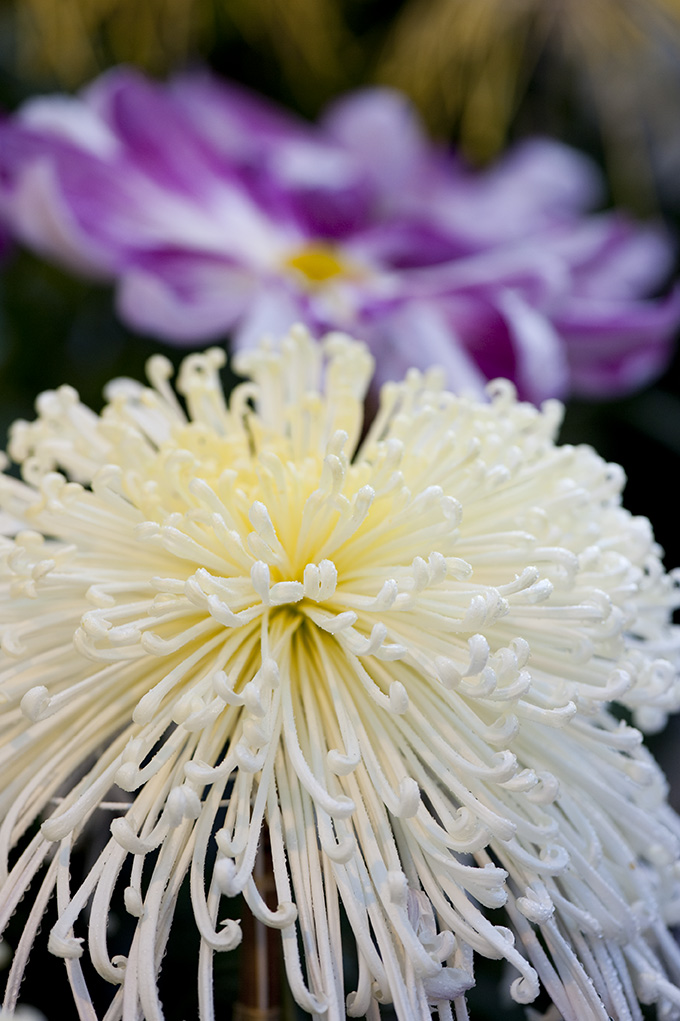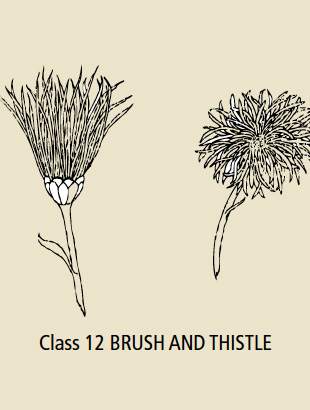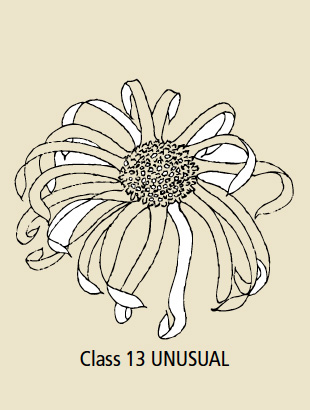Kiku Classification: Spider, Brush and Thistle, and Unusual
Posted in Behind the Scenes, Exhibitions on October 4 2011, by Ann Rafalko

Tomorrow, Wednesday, October 5, the mesmerizing art of kiku returns to the Enid A. Haupt Conservatory as part of Fall Flowers of Japan. These Japanese chrysanthemums, trained into a dizzying array of styles and displays, are not to be missed. In anticipation, we’re taking an in-depth look at these fascinating flowers.
There are two types of composite flowers. Chrysanthemums can have both types, ray and disc. Some composites have both ray and disc flowers; others have only ray or disc flowers. There are 13 different classes of chrysanthemums with varying flower forms defined by the National Chrysanthemum Society. (See classes one through three here, classes four through seven here, and classes eight through 10 here).

This class has long tubular ray florets that hook or coil at the end. The florets can be fine or coarse. The florets fall in a loose mass and look like they have barbs on their ends. Intricate spider mums look like firework displays.

These chrysanthemums either look like an artist’s paint brush or a thistle. In the brush form the fine tubular florets grow in an upright fashion, while in the thistle form the florets twist all around the stem or fan out in a horizontal manner.

These are the blooms that do not fit into any other class. They can be very exotic with twisted florets. The Edo varieties that you can see in shino-tsukuri or ‘driving rain’ displays are often from this category. Some of the ozukuri or ‘Thousand Bloom’ come from this class. Notice that the florets can be flat, spoon-like, or quill-like. Members of this class often take on characteristics of several of the classes.
Previous Days in the Kiku Countdown:
How Do They Do That?: Shino-Tsukuri or ‘Driving Rain’
Kiku Classification: Anemone, Spoon, and Quill
How Do They Do That?: Kengai or ‘Cascade’
Kiku Classification: Decorative, Intermediate Incurve, Pompom, and Single and Semi-Doubles
How Do They Do That?: Ozukuri or ‘Thousand Bloom’
Kiku Classification: Irregular Incurve, Reflex, and Regular Incurve
Illustrations courtesy of the National Chrysanthemum Society USA

